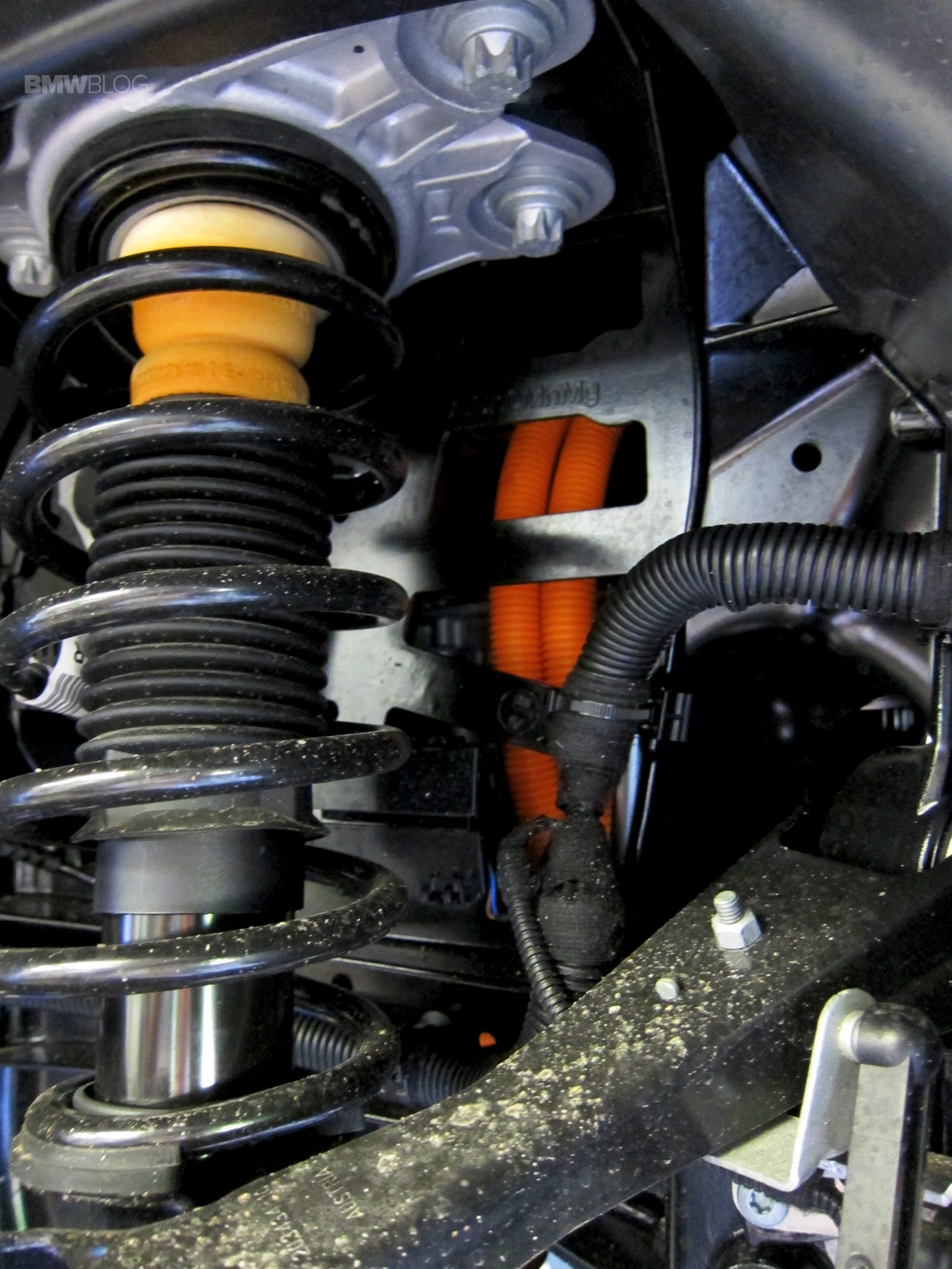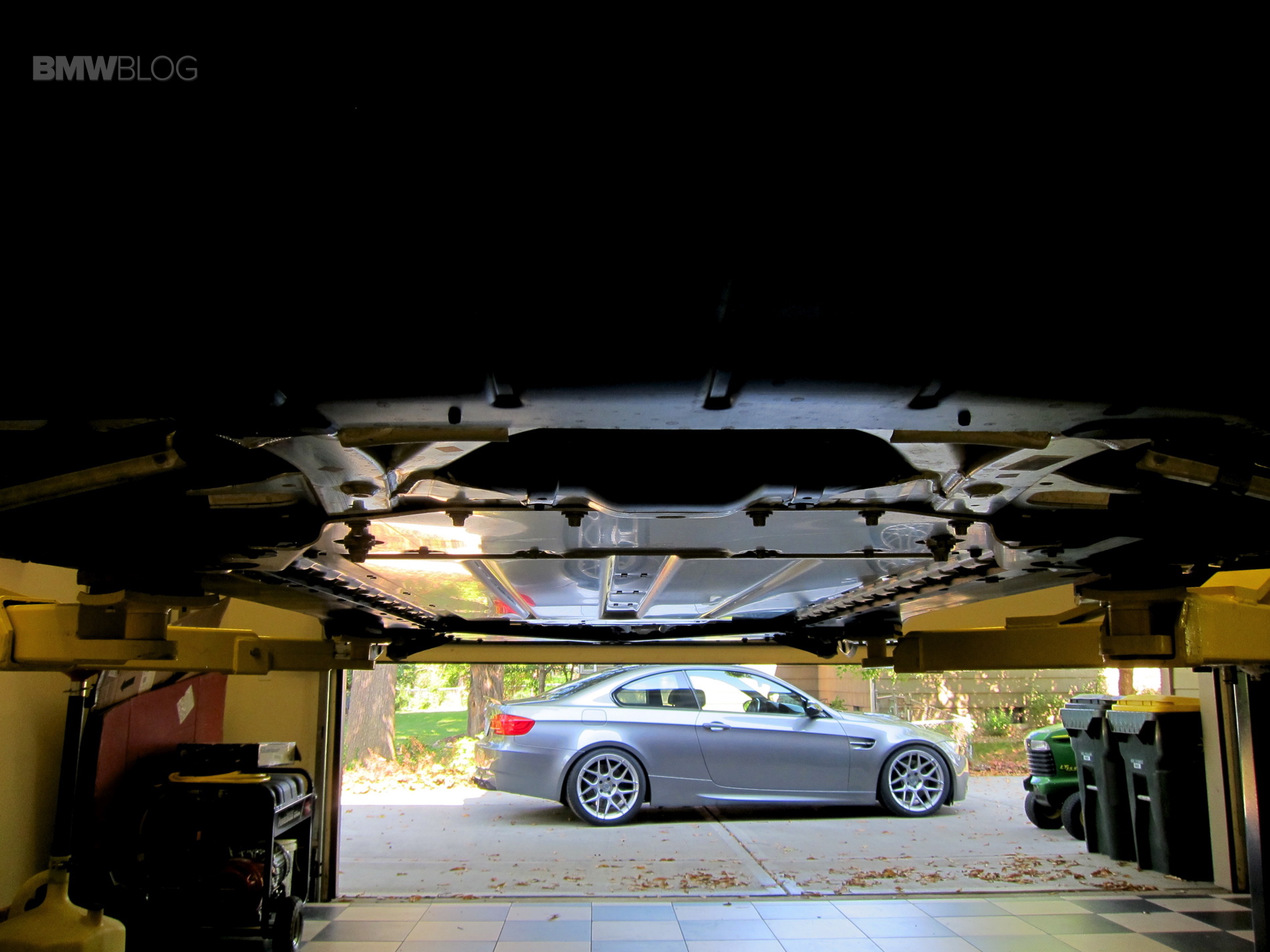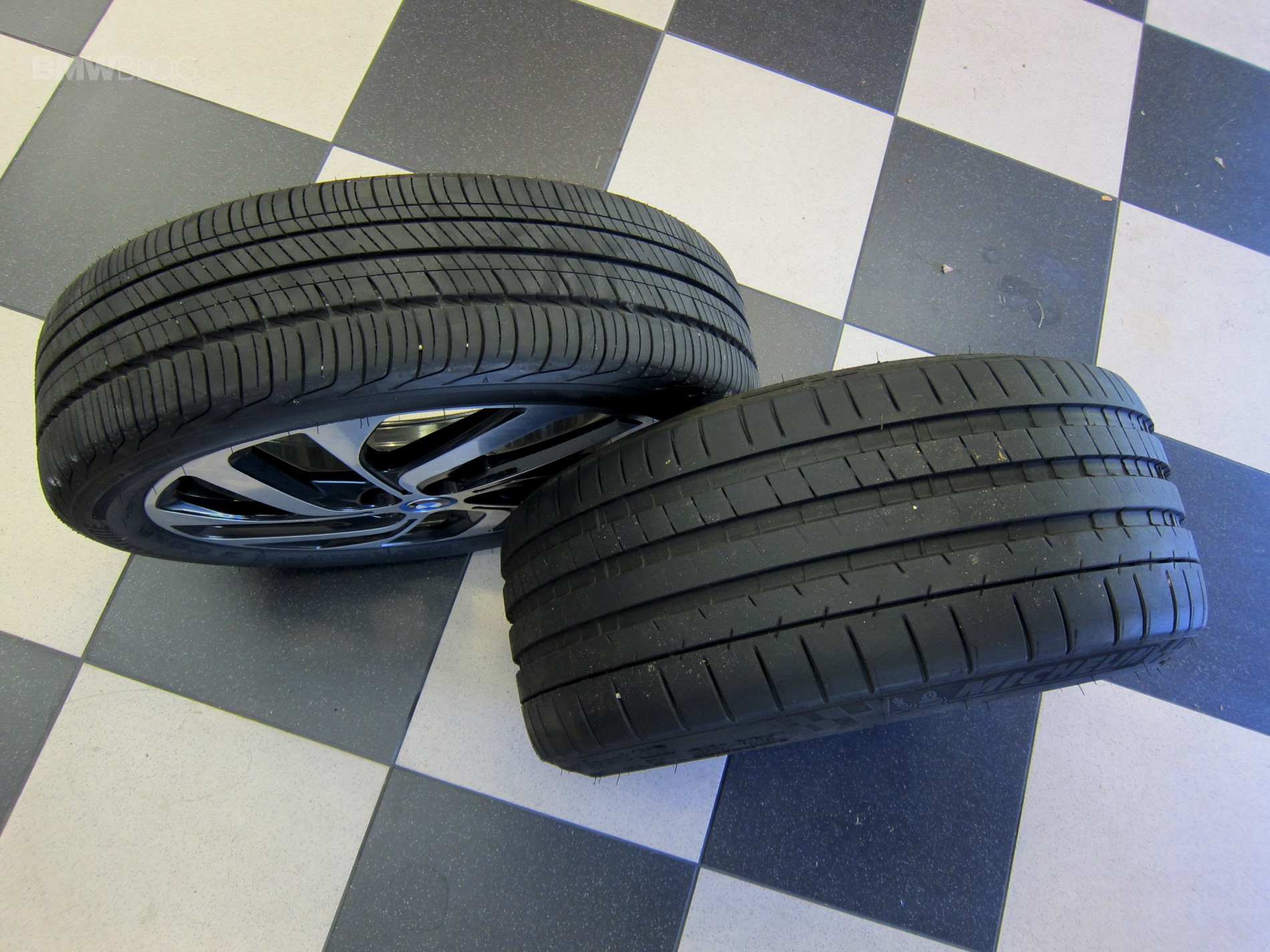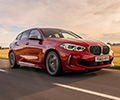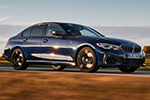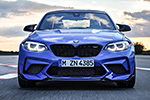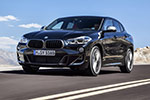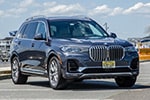BMWBLOG put our BMW i3 BEV up on a lift and removed its wheels to get a closer look. The i3 was designed from the outset to be an ultra efficient, lightweight electric vehicle, so things look quite different underneath. The i3 has 5.5 inch ground clearance so getting the lift’s arms correctly position was a cinch, compared to BMWBLOG’s lowered E92 M3.
Once up in the air, the i3’s narrow wheels were taken off. The most striking thing I noticed right away, was just how much of the underbody is battery. The i3’s 22kWh battery weighs 450 lbs and is protected by an aluminum housing to keep the lithium-ion batteries safe from road debris. BMW placed the battery in that spot to keep the center of gravity fairly low.
The second thing that caught my eye, was just how small the brakes are. There are several reasons for this.
First, the i3 is a light weight vehicle and therefore has less mass to stop. Second, the i3 has an excellent re-gen feature that converts the i3’s kinetic energy back into stored energy when slowing. There are many trips I take in our i3 where I don’t ever touch the brake pedal. BMW’s iRemote even encourages this efficient driving and you get a percentage efficiency rating after each trip. A third reason the brakes are so small is that the i3 only has a top speed of 93 mph as opposed to some of BMW M cars which can do 186 MPH on the Autobahn.
Examining the suspension components, I was amazed to see there are no anti-roll bars on either the front or the back. The front of the i3 has aluminum single-joint McPherson spring struts with a very effective anti-dive feature. Slamming on the brakes in a panic stop in the i3 doesn’t result in massive nosedive of the front end. The rear end of the i3 has a complex 5-link suspension that is part of the structure which holds the motor for more rigidity.
The i3’s electric motor is clearly visible from underneath the i3 and produces 170 hp, 184 lb-ft and revs up to 11,400 rpm. The intriguing thing about the electric motor is its placement on the driver’s right side. I assumed that it would be placed on the passenger side to balance out left/right weight when just a driver is on board.
The other surprising thing about a BEV is just to the passenger side of the i3’s electric motor is a stark void where the motor for the i3 Rex would reside. Scattered around the under body are powered wires in bright orange, for safety.
Turning to the wheels, the BMW i3’s tires are a 155/70/19 size on 19-inch light-alloy wheels, but because the tire is so tall, the contact patch is the same of that of a more conventional 16-inch tire. To improve efficiency, they have low rolling resistance. I was somewhat surprised that the i3 Tera World has staggered wheels, 19x 5” with 155/70/19 in the front and 19×5.5” with 175/60/19’s rear. The optional 20” tires are also staggered. To compare the available grip I stacked my E92 M3’s Competition Package BBS wheels next to the i3 Tera World.
I finally found something the same as other BMW”s – Factory Jack Pad for i3 is same as other current BMWs.
See more photos in the gallery below:









